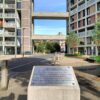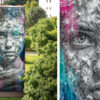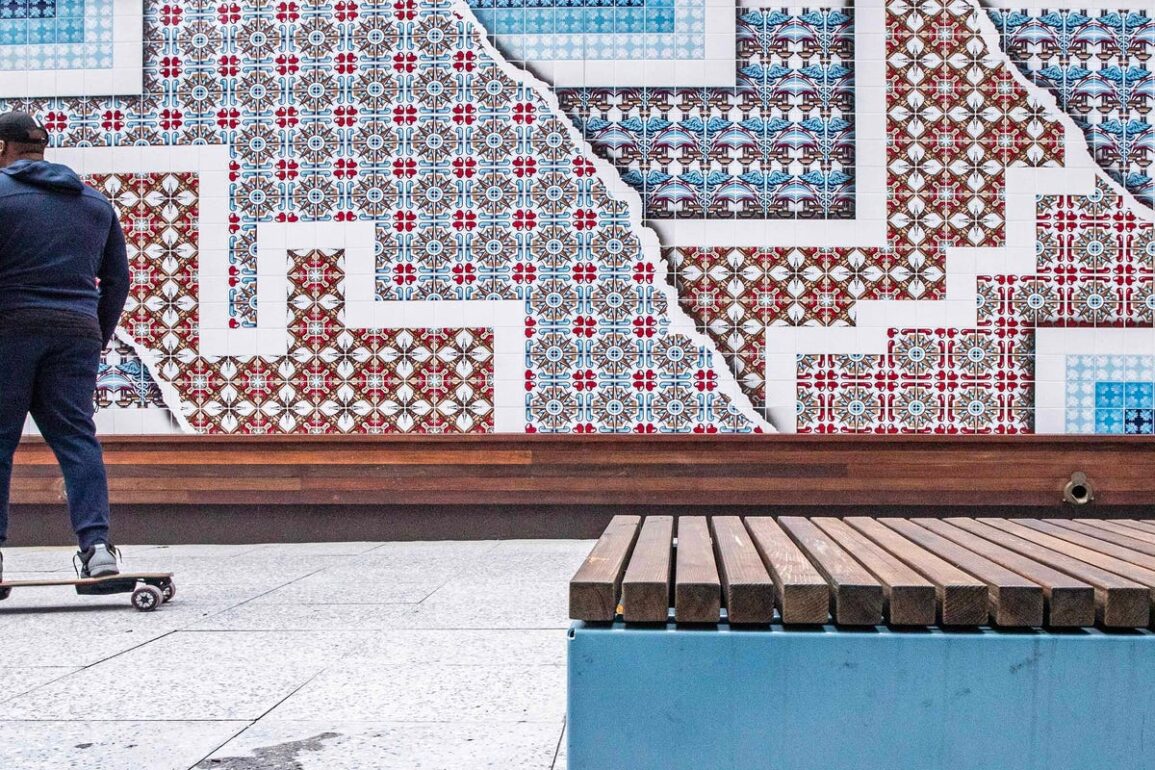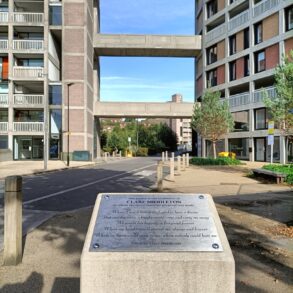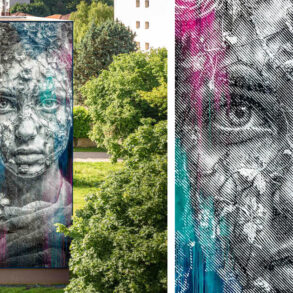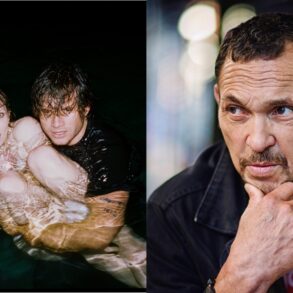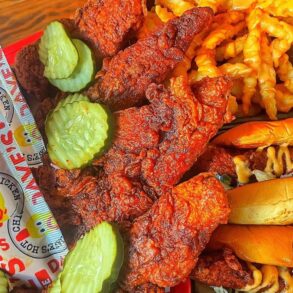Over its 41 years, Mural Arts Philadelphia has created more than 4,000 works. Many of the pieces are produced by women, pioneers in an often male-dominated domain.
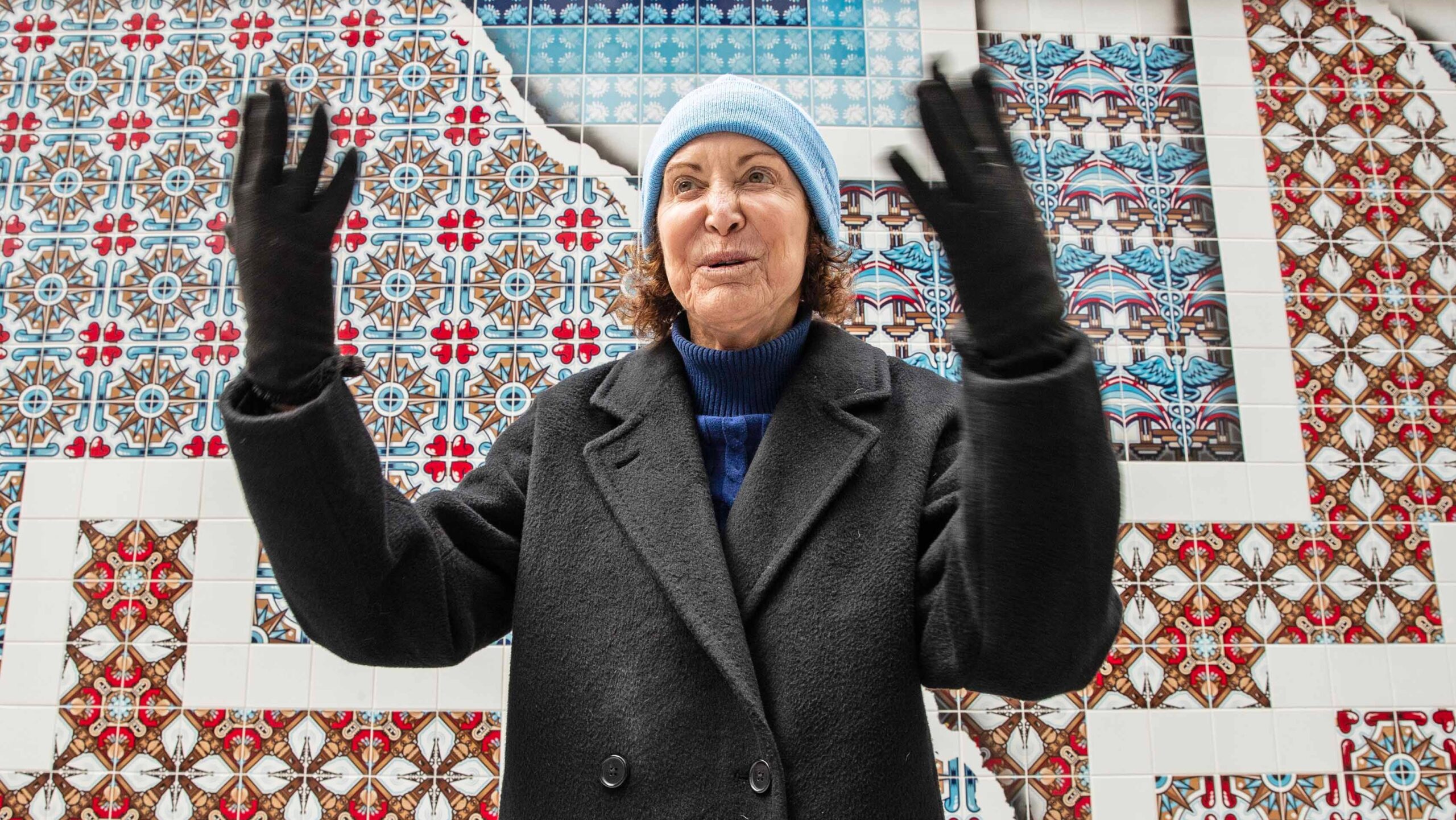
Mural Arts Philadelphia’s Jane Golden speaks on women muralists
Hear from Mural Arts Philadelphia Executive Director Jane Golden as she speaks on the importance and contribution of women muralists to Mural Arts.
PHILADELPHIA − The City of Brotherly Love has world-renowned museums showcasing some of the greatest artists in history.
The Philadelphia Museum of Art has works by Duchamp, O’Keeffe, Wyeth, Cezanne and others. The Barnes Foundation‘s collections include paintings by Renoir, Picasso and Van Gogh. And the Rodin Museum has the largest collection of works by the French sculptor outside Paris.
But some of the most eye-catching art in Philadelphia isn’t hanging on museum walls. It’s looming over parking lots, alleyways and side streets and decorating the exteriors of warehouses, soup kitchens, community centers, bodegas and rowhouses.
And the city’s dazzling street art inspires for another reason: Much is created by women, national pioneers in what is often thought of as a male-dominated domain.
Murals “can be very physical on the one hand, but on the other, you have to really have that humility, that vulnerability to put yourself out there,” says Jane Golden, executive director of Mural Arts Philadelphia, who’s been leading the nonprofit since 1984, when it was the Anti-Graffiti Network.
Women bring that humility and vulnerability − but also an inner strength and power to the work, she said.
As Women’s History Month draws to a close, here are some of the women who helped make Mural Arts Philadelphia a national model for public art programs, one that recently won the top spot in USA TODAY’S 10 Best Cities for Street Art.
Jane Golden: The leader who took a chance on an anti-graffiti initiative
Golden wanted to move back east in 1984 after attending Stanford University and working as an artist in Los Angeles, so she applied for a job with a newly formed anti-graffiti initiative launched by Philadelphia’s first Black mayor, W. Wilson Goode.
The New Jersey native had learned about more than art on the West Coast: She also learned from mentors such as artist and activist Judy Baca the value of persistence, of not taking “no” for an answer, of finding ways around roadblocks.
Over the next 41 years, Golden has seen the small Anti-Graffiti Network evolve into Mural Arts Philadelphia, which has brought more than 4,000 works of public art to the city’s neighborhoods. Initially a way to channel artists’ energy into a public benefit, Mural Arts now includes more than 25,000 artists, program participants and volunteers working on as many as 100 projects a year.
Mural Arts’ functions are more than decorative: Its Restorative Justice (incarcerated and post-incarcerated people and crime victims) and Porch Light (homeless people, people in addiction and those facing financial insecurity and disabilities) programs help some of the city’s most challenged populations, while its Mural Arts Initiative brings the Philadelphia model to other cities.
Murals are designed with community input, and Golden remembered how, in the Anti-Graffiti Network’s early days, women who were neighborhood block captains and community leaders were (and still are) indispensable partners, “the ones pushing the boulders up the hills.”
Golden is proud of the powerful presence female street artists have in the city. “We value equity and we try to be a platform for younger artists to elevate their work, especially artists who aren’t classically trained or come from communities where art isn’t thought of as a way to make a living,” she said.
“We want you to look beyond the murals, to see how it resonates deeply with the people who live here,” she said. “These murals are the autobiography of Philadelphia. Every mural tells a story. Every person who works on a mural has a story.”
Nilé Livingston: Asking ‘how can I make world a better place?’
Nilé (pronounced “NI-yell”) Livingston went to Philadelphia’s prestigious High School for the Creative and Performing Arts, which counts among its alumni members of The Roots and “Hamilton” star Leslie Odom Jr. But she initially had a hard time finding a job in the arts.
Now in her 22nd year with Mural Arts Philadelphia, Livingston said art is male-dominated because “we live in a male-dominated world, that’s the default.”
Her family has lived in West Philadelphia for generations; her grandfather was a prominent architect and her father, a draftsman. Telling the stories of Philadelphians is important to her − all Philadelphians.
She pointed to a mural she worked on in the city’s Gayborhood, “Finally!” a tribute to the Black queer and transgender women who built the city’s Ballroom scene. Before working on it, Livingston noted, “We hadn’t seen art that shines light on that community. When we think of those icons, we think of Madonna and Beyonce, but this is more authentic and shows a community on the margins.”
Before embarking on a new project, Livingston said she’ll spend time walking the neighborhood, talking to “the corner historians, the people who have stories you won’t find in a public library or on social media because they’re not documented in traditional ways. You have to spend time with them to pull out stories. It’s a shoe box under their bed, or the fliers they found on a telephone pole.
“With each new project, I ask, how can I make world a better place, or shine light on a community, honoring the things they do to maintain their freedom and their sense of pride?”
Meg Saligman: A mom of four who scales buildings to create art
Meg Saligman has been with Mural Arts going back to its time as the Anti-Graffiti Network. She remembers very well the days when murals were mostly a male art form.
“When we started I was probably the one of the few lone wolves,” she recalled. “When it comes to street art, we think it’s only men who will scale the building and hang off them.
“Well, I am a mother of four who scales the building, hangs off it and operates the boom,” she said.
She even remembers how, as the mother of a newborn, she pumped while on a cage 90 feet in the air while working on one of Philadelphia’s most visible murals: a massive draped American flag painted in the wake of the 9/11 attacks that can be seen by tens of thousands of motorists daily from I-95, the Benjamin Franklin Bridge and the PATCO commuter rail line. She also created one of Mural Arts’ most ambitious earlier murals, 1997’s “Common Threads.“
Women, she said, bring something different to the art world, and Golden and Mural Arts tap into that: “We intentionally build multigenerational teams and intentionally go for diversity, and that includes women.
“Philadelphia is a gritty city, and it’s a great city for street art for that reason, and that amps up the quality … The same thing that makes us rowdy sports fans is what makes us rowdy street artists. When we’re in, we’re in.”
Larissa ‘Reese’ Juelg: Art saved her life
A self-described “Army brat,” Larissa Juelg, who goes by Reese as a street artist, knows firsthand how male-dominated the street art scene is. She always knew she wanted to be an artist but had no idea how. She started dating a graffiti artist and fell in love with it, but found graffiti artists, almost all men, to be chauvinistic, even misogynist.
She endured years of trauma and chaos: Bouncing from home to home, living on the streets, descending into addiction, enduring assaults and abuse.
Today, though, she’s rebuilding her life and leading her first mural project through Mural Arts’ Color Me Back program, which helps people earn same-day paychecks for work and connects them with social services and other supports.
“You know how they say cats have nine lives? I think I have one left,” she said. She’s making the most of it now, though, living in Philadelphia’s trendy Northern Liberties neighborhood and embarking on a mural at a SEPTA public transit station in the city’s Northeast.
Mural Arts, she said, “feels like the first family I ever knew.”
“It could change anyone’s life. I’ve been doing this for a year and I love this,” she said. Joining Mural Arts “is like a dream come true, like redemption. I look forward to Mondays now! How many people can say that?”
She wants to use art to create opportunities and hope for other women like her: “I can offer a lot to this program because I’ve been through the grimmest things. I can be a light to them. Encourage women who I know might be fragile because I was, too. I think it’s the reason I’m still alive.”
Do you want to share a slice of Americana with USA TODAY? Contact Phaedra Trethan by email at ptrethan@usatoday.com, on X (formerly Twitter) @wordsbyphaedra, on BlueSky @byphaedra, or on Threads @by_phaedra
This post was originally published on this site be sure to check out more of their content.

